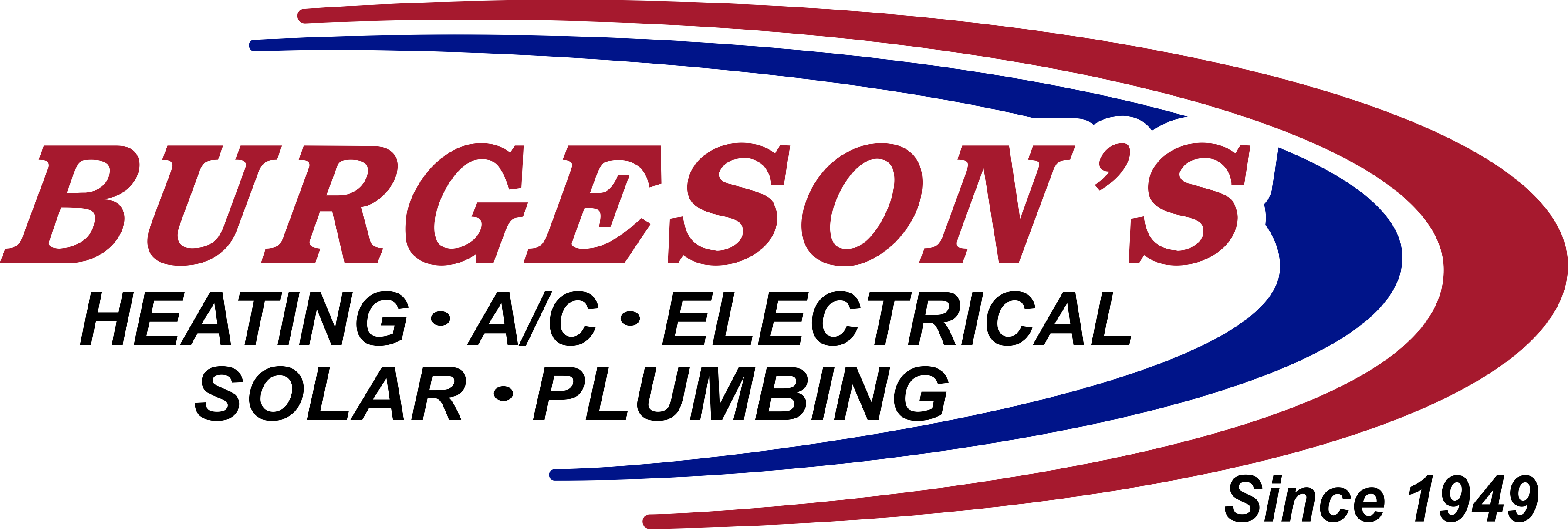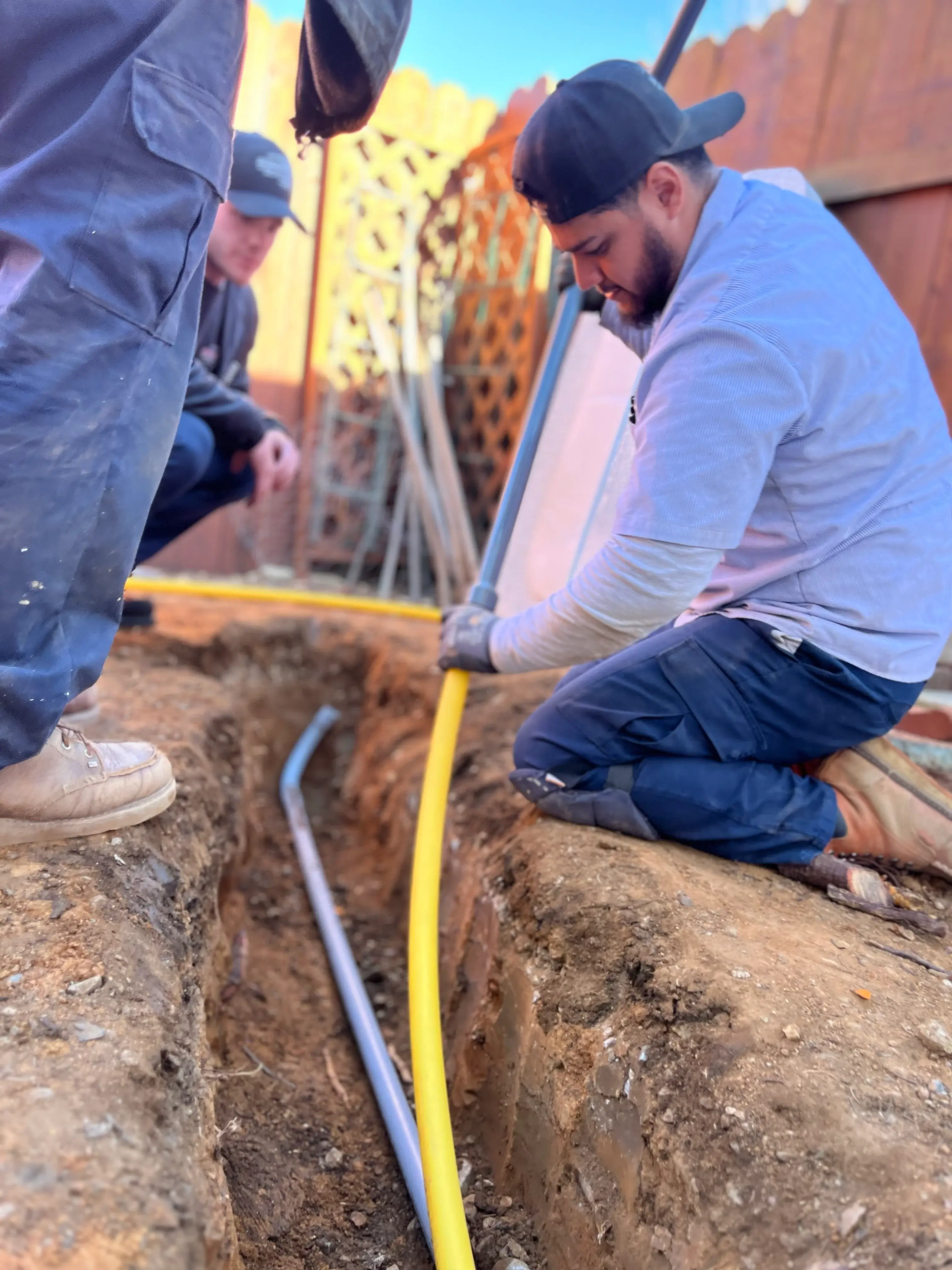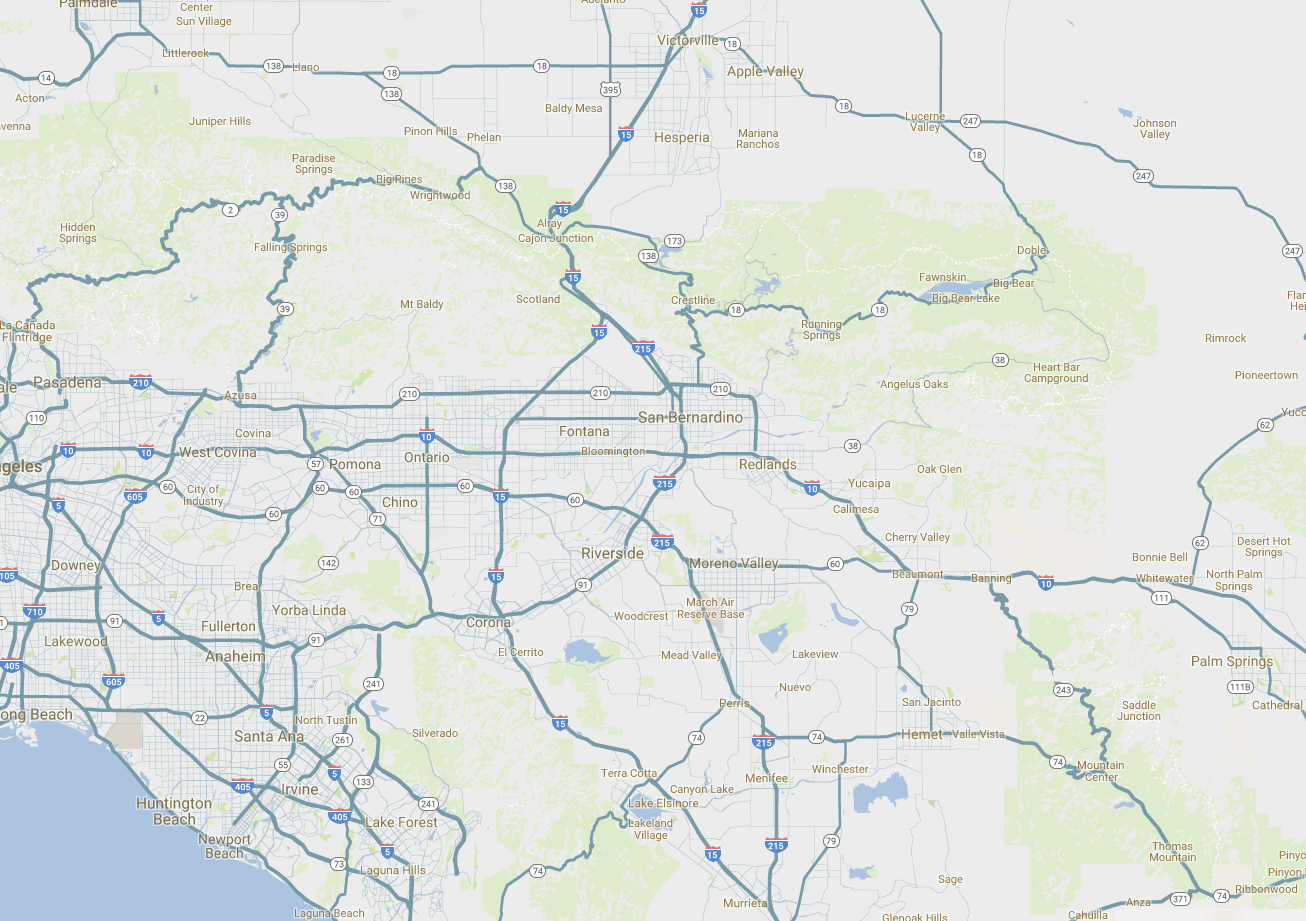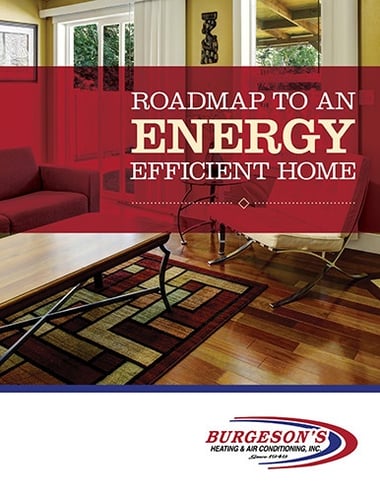How Much Does it Cost to Install a Gas Line?
Thinking of adding a gas line to your home? If so, the first question on your mind is likely: how much does a gas line installation cost? In California, the cost to install a gas line ranges from $500 to $2,000+.
The price of your gas line installation will vary depending on the following factors:
- The length of the new gas line
- The location of the new gas line
- The number of gas appliances to connect and their BTUs.
- The type of pipe material used
- The company that installs the gas line
Let’s look at each of these cost factors in more detail below.
Want a free quote to install a gas line in your California home? Contact Burgeson’s today for a no-pressure, upfront estimate. Call (909-792-2222) or…
The length of the new gas line
Most natural gas line installation projects fall into the categories below:
- Running a gas line from the main service line (at the curb) to the meter or house (100+ feet)
- Running a gas line from the meter to outside or inside gas appliances (20–100 feet)
- Extending an existing gas line (20 feet or less)
The longer the length of the gas line, the more expensive the installation will be. This is because labor and material costs are greater for longer runs of pipe.
Pro Tip: If you’re planning to install natural gas lines in your home for the first time, you'll need to contact the utility company. They will first need to run a gas line from the main service line at the street or curb to your home first. From there, a plumber will need to install a gas line to each gas appliance you have inside or outside your home.
Understanding the gas line installation cost is essential to budget accurately for your project.
The location of the new gas Line
Installing gas pipes above ground (such as connecting a household appliance to the meter) will usually cost less than installing gas pipes below ground. The reason is that underground installations require extra labor, equipment, and time, raising the overall cost of the project.
If a professional needs to install pipes underground, they will typically use one of two installation methods:
Trenching: The traditional digging method used for laying pipes in a straight line through a yard to connect outside appliances to the meter or for running a gas line from the main line to the meter.
Horizontal Directional Drilling (HDD): A “trenchless” installation method that uses special drilling equipment to lay gas lines underground. This method is ideal for installing gas lines under driveways, roads, or sidewalks.
HDD is generally more expensive than trenching. However, trenching may require costly post-installation work, such as restoring landscaping, driveways, or other surfaces.
By carefully considering the location of the new gas line, you can better estimate how much it will cost to run a gas line to your desired appliances.
THE NUMBER OF GAS APPLIANCES YOU WANT TO CONNECT TO THE NEW GAS LINE, AS WELL AS THE BTUS ASSOCIATED WITH EACH ONE
The more gas appliances you want to connect to the new gas line, the higher the overall cost of the project due to increased labor and materials.
Here are some common gas appliances you can connect to:
- Stove & oven
- Dryer
- Furnace
- Water heater
- Inside fireplace
- Outside gas grill
- Outside fire pit
- Pool heater
- Gas generator
The cost to install a gas line can increase significantly with multiple appliances. Ensure your plumber gives you an estimate based on all the appliances you plan to connect 7 the BTUs associated with them
The type of pipe material used
The most commonly used pipe materials for gas lines include:
Black iron: Strong and airtight, but prone to corrosion when installed underground.
Galvanized steel: Less prone to corrosion than black iron due to a zinc coating.
High-Density Polyethylene Piping (HDPE): Corrosion-resistant and flexible, ideal for outdoor use.
Flexible Corrugated Stainless-Steel Tubing (CCST): Resistant to damage from natural disasters.
Selecting the right pipe material is a critical step in keeping your gas line installation cost within budget while ensuring safety and compliance.
THE COMPANY WHO INSTALLS THE GAS LINE
If you’re adding natural gas to your home for the first time, the gas utility company may help with the initial setup at a reduced price. Typically, they’ll handle:
- Running a service line from the street/curb to the house
- Installing the gas meter
- Hooking up the service line to the gas meter
Note: If your home is more than 100 feet from the street, the utility company may charge an extra cost per foot of pipe to install the gas line.
Beyond these initial services, any additional gas line installation work is the homeowner’s responsibility, requiring a licensed plumbing professional. Ensure your plumbing company:
- Is licensed to obtain necessary permits and comply with local codes.
- Offers guarantees on their installation service.
- Has at least 10 years of experience.
Before hiring a plumbing company to install your new gas line, make sure:
Choosing the right professional can directly affect how much it costs to install a gas line and ensure the job is done correctly.
ADDITIONAL FACTORS THAT MAY IMPACT THE PRICE
In addition to the primary factors, other elements can influence the cost of installing a gas line:
- Inspections: Required permits and inspections may add to the overall cost.
- Landscaping Costs: Restoring lawns, flower beds, or other outdoor areas post-installation.
- Repairs: Fixing damage to concrete, drywall, or flooring caused during installation.
These additional costs can affect the total gas line installation cost significantly, so it’s important to factor them into your budget.
COST TO MOVE A GAS LINE VERSUS FIRST INSTALL
Moving an existing gas line typically costs less than a new installation, as fewer materials and less labor are required. Costs can range from $250–$800 depending on the scope of the move.
If you’re considering moving a gas line, compare the cost of installing a gas line in a new location versus modifying the existing setup to determine the best financial option.
REASONS TO INSTALL A GAS LINE
Adding a gas line to your home offers several benefits:
- Efficiency: Gas appliances often operate more efficiently than electric alternatives.
- Multiple Uses: Power a variety of appliances indoors and outdoors.
- Reliability: No service interruptions during power outages.
- Cost Savings: Natural gas is typically more affordable than electricity in California.
Understanding these benefits can help you decide if installing a gas line is worth the investment.
WANT A QUOTE TO INSTALL A GAS LINE IN YOUR HOME?
One of our plumbing experts can give you an upfront, honest estimate on the cost of installing a gas line. How much does it cost to run a gas line? The answer depends on several factors, but our team ensures transparent pricing and quality service.
With years of experience and countless successful installations, Burgeson's provides high-quality workmanship and excellent customer service every step of the way.
Related reading
How Much Does it Cost to Replace a Sewer Line in the Southern California Area?
How to Unclog a Drain: A Southern California Plumber Explains













